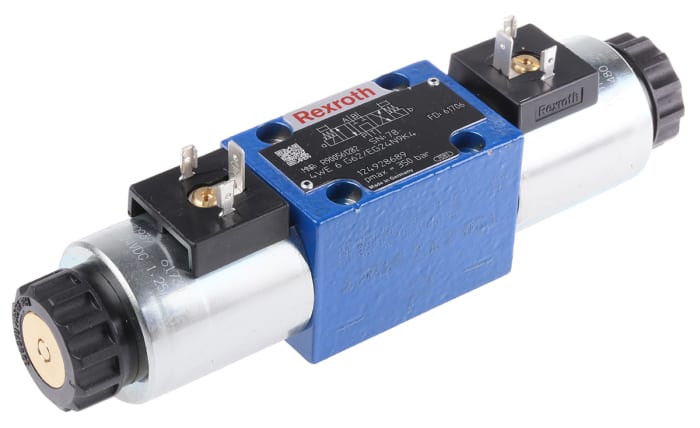Types of hydraulic solenoid valves
One of the important and widely used parts used in the hydraulic system is the hydraulic valve. The hydraulic valve is used to control the systems. The high power of the pump motor causes a lot of force to be applied to the fluids, which are controlled by hydraulic valves.
Hydraulic valves are produced in 2 types, manual and electric. The structure of the hydraulic solenoid valve is more complex than the hydraulic manual valve and its applications are also wider. In this article, we will review the types of hydraulic solenoid valves. Stay with us
What is a hydraulic solenoid valve?
One of the important industrial parts is the hydraulic solenoid valve. These valves operate using electricity. This part must control the amount of liquid or fluid flow in a hydraulic system and be connected and disconnected or adjusted at different times. Another name for a hydraulic solenoid valve is a solenoid valve device. These valves control the currents in the system using electric power.
The hydraulic solenoid valve has a ferromagnetic core that has the ability to move. When the electric current enters, a magnetic field is created and it moves. One of the most important parts is the solenoid that controls the valve inputs. In other words, when electric current enters the coil, they become magnetic and attract electric current.
Types of hydraulic solenoid valves
There are different types of electric valves according to their engineering and operation. According to the characteristics of each of them, they have different uses. Their diversity has also affected their price range.
Some of their types are:
- Hydraulic pressure control valves
- Hydraulic direction control valves
- Hydraulic flow control valves
Hydraulic pressure control valves
One the types of hydraulic solenoid valve are hydraulic pressure control valve. There are hydraulic pressure control valves in every circuit and hydraulic system. The main function of these valves is to protect the pumps and circuits from increasing pressures that may occur.
The most widely used and major ones are counterbalances, unloaders, reducing and relief valves, etc. These valves are produced in the form of an under-valve, block, and road head. These valves have different types, including pressure switches, sequential valves, balancing valves, unloading valves, pressure-reducing valves, combined safety valves, and simple safety valves.
Hydraulic pressure control valves have many advantages, which include:
- These valves have a simple and compact design and low cost.
- These valves do not need an external power source.
- These valves are easy to maintain and have high reliability.
- They also respond quickly and are reliable.
- Ability to receive a lot of external torque.
These valves have small and minor disadvantages, which are: easy leakage and change of oil temperature according to the change of ambient temperature.
Hydraulic flow control valves
Another type of hydraulic solenoid valve is the hydraulic flow control valve. These valves are used to adjust the circulation speed or to adjust the piston movement speed. These valves are divided into two types pressure compensators and without pressure compensators.
Hydraulic flow control valves have many advantages, which include:
- The possibility of using the battery during power outages
- Ability to adjust the appropriate speed
- Ability to adjust the output torque
- Ability to produce high torque
- Reliable performance
Conclusion: Necessary tips when buying all types of hydraulic solenoid valves
There are some points that you should pay attention to when buying hydraulic solenoid valves. These points are:
- Pay attention to the dimensions and opening size of the solenoid valve, you should connect the pipe according to its size and start it.
- You should pay attention to the maximum time it is on and choose the right valve for that time.
- Attention to the amount of input voltage (the type of voltage affects the way the valve works, so you should pay attention to the type of direct current and alternating voltage.)
- Paying attention to the amount of pressure (you must choose milk that has the ability to withstand this amount of pressure.)
- Paying attention to the material that is used in the electric valve for transmission.




Comments
Post a Comment